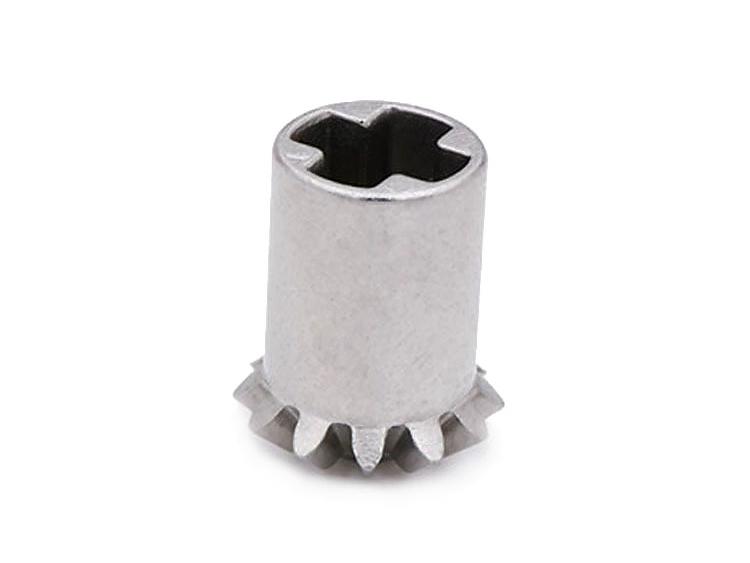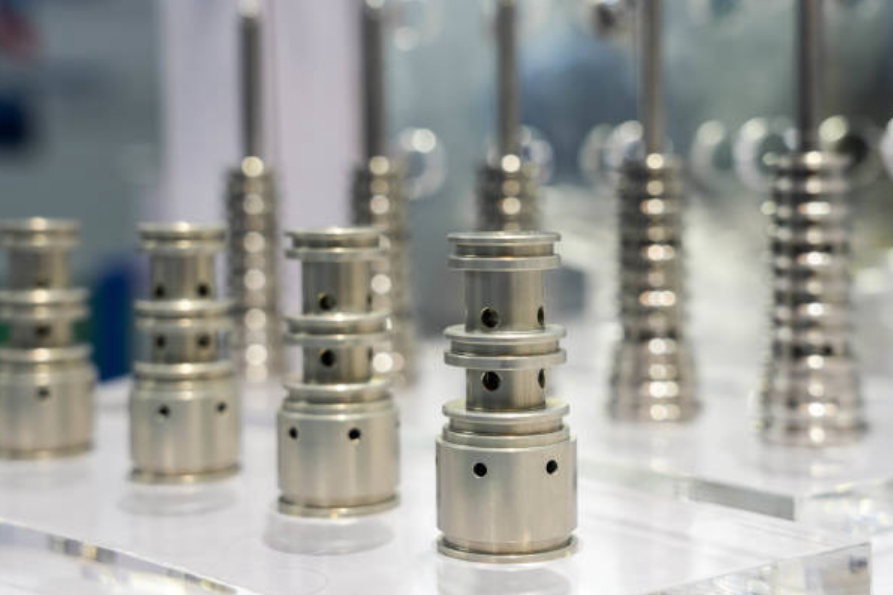Durable High-Strength Components for Advanced Locking Systems
In modern security systems, the reliability and durability of locks are directly determined by the manufacturing quality of their core internal components. From precision mechanical lock cylinders to robust smart lock structures, the strength, accuracy, and durability of each component together form the first line of defense in security protection. As Neway’s engineering team, we fully understand the stringent manufacturing requirements for lock components. Through advanced metal forming technologies and materials engineering, we provide trusted, high-performance component solutions for the global security industry.
Advanced Processes for Manufacturing Highly Durable Core Lock Components
Metal Injection Molding (MIM): The Ideal Solution for Complex Precision Small Components
Metal injection molding technology has fundamentally transformed the way small and complex lock components are manufactured. This process is particularly suitable for producing lock cylinders, pins, and precision transmission gears with complex geometries and tight dimensional tolerances. Metal Injection Molding (MIM) services enable near-net-shape forming in a single step, ensuring outstanding dimensional consistency along with excellent mechanical properties and surface finish. For lock parts requiring high consistency in mass production, the MIM process offers unparalleled advantages in cost control and quality stability.
Die Casting: The Foundation for High-Strength Housings and Structural Parts
Lock housings and structural frames must withstand external impact and long-term use, and die casting provides an ideal manufacturing solution for such components. Zinc alloy die casting parts offer excellent dimensional stability and thin-wall forming capability, making them highly suitable for complex lock housings and internal structural components. Aluminum die casting, with its superior strength-to-weight ratio and good machinability, is the preferred process for larger lock bodies and structural supports. Both die casting technologies deliver high production efficiency, meeting the market’s demand for large-scale, high-quality lock manufacturing.
Investment Casting: Meeting Special Structural and Alloy Requirements
For lock components with special geometries or those requiring specific high-performance alloys that are difficult to achieve with conventional machining, investment casting provides an ideal solution. This process can produce extremely complex metal parts with high integrity, making it especially suitable for lock components featuring internal channels, complex curved surfaces, or integrated designs. With its broad material adaptability, ranging from stainless steels to high-temperature alloys, investment casting opens up new possibilities for lock designs operating in demanding security environments.
CNC Machining: Ensuring Ultimate Precision and Surface Finish
In lock manufacturing, certain critical components demand extreme precision in tolerances and surface finish. CNC machining prototyping plays an irreplaceable role in this area. Whether for high-precision lock cylinders, security wafers, or complex transmission mechanisms, CNC machining can deliver micron-level accuracy. Multi-axis machining centers enable multi-surface machining in a single setup, ensuring precise relative positioning between features, which is crucial for the overall security performance of the lock.
Post-Processing and Surface Technologies that Extend Lock Service Life
High-quality surface finishing is a key factor in ensuring the long-term reliability of lock components. Electroplating not only enhances the aesthetic appearance of lock parts but, more importantly, creates a protective metallic coating that significantly improves corrosion resistance and surface hardness. For locks used outdoors, powder coating technology provides a thicker and more durable protective layer, effectively resisting UV radiation, moisture, and chemical exposure. For stainless steel components, passivation removes surface iron contaminants and enhances the chromium oxide layer, thereby significantly improving the inherent corrosion resistance and ensuring that locks maintain reliable performance over the long term in humid environments.
Key Material Science Behind Core Lock Components
Stainless Steel: The Perfect Combination of Strength and Corrosion Resistance
In high-end lock manufacturing, stainless steel materials are the preferred choice thanks to their excellent strength and corrosion resistance. Whether for exposed outdoor housings or internal precision components that require long-term, stable operation, stainless steel delivers reliable performance. Different grades of stainless steel support diverse security levels and environmental conditions, from common 304 stainless steel to higher-strength 17-4PH precipitation-hardened stainless steel, offering wide design flexibility for lock engineers.
Zinc Alloys and Aluminum Alloys: Balancing Cost and Performance
For lock components that require both good mechanical performance and cost efficiency, zinc alloys and cast aluminum alloys offer ideal solutions. Zinc alloys feature excellent fluidity and fine detail replication, making them suitable for lock parts with decorative patterns and intricate features. Aluminum alloys, with their lightweight and high-strength characteristics, perform well in larger lock structures. Both materials can achieve a variety of decorative effects through suitable surface treatments, catering to aesthetic preferences across different markets.
High-Performance Special Alloys and Ceramics: Meeting Extreme Requirements
In ultra-high-security applications or special environments, conventional materials may fail to meet extreme performance demands. Titanium alloys, with their exceptional strength-to-weight ratio and outstanding corrosion resistance, are ideal for high-security lock components. Zirconia ceramics, characterized by their extremely high hardness, wear resistance, and chemical inertness, excel in resisting brute-force attacks and harsh corrosive environments. The application of these advanced materials elevates lock security performance to a new level.
Applications of Innovative Lock Components in Security Solutions
The Core of Mechanical Locks: Precision Manufacturing from Cylinders to Pins
The security performance of traditional mechanical locks relies entirely on the precision manufacturing of their core elements. Our locking system solutions cover all key components from lock cylinders and pins to latches. Each part must meet stringent tolerance and surface finish requirements to ensure smooth operation and reliable locking over thousands of cycles. Different security grades call for different manufacturing processes and material combinations, ranging from cost-effective zinc alloy die castings to high-end MIM stainless steel components. We provide customized solutions to match diverse application needs.
Internal Structural Components for Smart and Electronic Locks
With the rapid growth of the smart lock market, requirements for internal structural components have become increasingly demanding. Micro gear sets, precision transmission mechanisms, and electronic component brackets must deliver optimal performance and reliability within limited space. MIM is particularly suitable for these small, complex, and high-strength components, offering superior consistency and cost efficiency in mass production, giving smart lock manufacturers a clear competitive edge. At the same time, electromagnetic shielding and signal integrity have become critical design considerations for smart lock components.
Durability Challenges for Outdoor and Industrial-Grade Locks
Outdoor and industrial environments impose far more stringent requirements on lock components. Salt spray corrosion in marine environments, chemical exposure in industrial settings, and extreme temperature fluctuations can all accelerate lock aging and failure. To tackle these challenges, we combine appropriate material selections with tailored surface treatments to deliver customized solutions that withstand defined environmental conditions. From high-nickel alloys to specialized coatings, every product undergoes rigorous testing and validation to ensure long-term reliability in its target application environment.
Five Engineering Principles for High-Security Lock Component Design
Successful high-security lock component design requires a systematic engineering approach. Tensile strength and hardness determine a component’s resistance to brute-force attacks, while impact toughness affects its behavior under dynamic loads. Fatigue life analysis ensures reliability under repeated operation, and corrosion-resistant design safeguards service life in harsh environments. Finally, strict tolerance control is fundamental to ensuring that all components work together seamlessly to achieve the intended security functions. These principles, together, form the design framework for high-security lock components and guide every decision, from concept through to the finished product.
Conclusion: Precision Manufacturing as the Foundation of Security
Lock security is not only a matter of design philosophy but also fundamentally depends on the precision manufacturing and quality control of every component. From material selection and forming processes to heat treatment and surface finishing, each stage directly influences final performance and reliability. Leveraging extensive experience in multi-material forming and a stringent quality management system, Neway provides comprehensive support for global lock manufacturers, from prototype development to large-scale production. We are committed to advancing security through engineering innovation, working with our customers to build safer, more reliable, and more durable lock solutions that protect people’s lives and property.
FAQ
What material and process combos best prevent prying and brute-force attacks?
What benefits does MIM offer over machining for gears in smart locks?
How to choose materials and treatments for outdoor lock corrosion resistance?
For miniaturized lock parts, which is better — MIM or investment casting?
Can you supply a full lock component solution from prototype to mass production?



